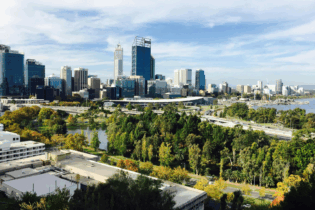This week the Southern African Vinyls Association (SAVA) released the results of its first ever Polyvinyl Chloride (PVC) Recycling Survey into the state, scope and size of the local PVC recycling market.
The information obtained from the survey will also form the baseline for an Industry Waste Management Plan for the Department of Environmental Affairs. Size of the PVC Market in South Africa PVC is a key product of the chemical industry and, along with polypropylene and polyethylene, one of the most widely produced plastics. Today, about 40 million tons of PVC is produced worldwide. However, as consumers use more plastic products, more plastic waste is being created. Additionally, PVC is one of the most widely used polymers in the world and has the longest history of recycling amongst plastics and the most advanced level of mechanical recycling. However, when competing against inexpensive gas and oil used to make virgin material, in addition to issues such as additives used, exposure to heat and contamination, it does weaken the case and makes PVC recycling even more challenging. Despite this, the tonnages recycled locally since 2009 have increased by 16 % to 18 488 tons recycled in 2014. Ease of recycling The quantity of PVC waste available is a function of PVC consumption. However, in contrast to most commodity polymers such as Polyethylene terephthalate (PET) or Polypropylene (PP), the majority of PVC products can be found in long-term applications with an expected life-span of 50 years or more. There is therefore a considerable time difference between PVC consumption and PVC waste. In South Africa, there are currently about 40 PVC recyclers who procure separated, sorted recyclables from various sources such as collectors. During the first step of processing, further sorting is done and the unwanted and unsuited material is returned to landfill. The remainder of the material is then processed further and sold to convertors as a raw material.Very few of the PVC recyclers only recycle PVC. Due to low tonnages, the majority of them also recycles one or two other materials. Gauteng has the largest number of PVC recyclers and also the largest volumes of PVC recycled in 2014, namely 69%. The North-West Province, on the other hand, only has 6 recyclers, but managed to recycle 726 tons per recycler versus the 670 tons per recycler in Gauteng. There was only 1 PVC recycler each in the Eastern Cape, Limpopo and Mpumalanga in 2014.
Large volumes of miner’s gumboots, mining hoses as well as cables originate from the mines and it makes therefore sense that the larger recyclers are based in the Northwest Province and Gauteng. Results Salient points from the survey are that the lifespan of the majority of PVC products is long. In building and construction, for example, an estimated life span of 50 to 100 years is not unrealistic. Consequently the tonnage of PVC items entering the waste stream remains small and insignificant. This situation, however, will change over time as progressively a greater amount of PVC products approach the end of their useful economic lives and slowly begin to increase the volume of the PVC waste stream. Increased collection in outlying areas, better communication between role-players in the value chain, from waste generators to collectors and recyclers, more consumer education with regards to what can be recycled and where to take recyclables, development of new markets for products made from recycled material, increasing the content of recyclate used in the manufacturing of new products, designing for recycling which includes the phasing out of hazardous substances such as lead and an investment in a wash plant for the pre-treatment of PVC-U waste, are some of the aspects identified through this report as requirements to significantly increase diversion rates. Recycling targets are also difficult to measure and SAVA has said in a statement that the focus should in future rather be placed on implementing projects aimed at encouraging end-markets for recyclate, as it would drive recovery upstream. SAVA has also stated that it believes that the key to succeeding and avoiding costs in South Africa’s current regulatory environment is to take a proactive approach and for the industry to invest in a long-term and innovative approach towards waste management.







